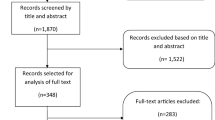Abstract
There is no generally accepted definition of what constitutes dry skin, but low water content of the stratum corneum (SC) and lower layers of the skin definitely play a role in the pathomechanism. Therefore, it would seem obvious that the right way to combat and reverse dry skin is by giving it what it lacks—water. Put another way, if dry skin is deficient of water, it makes sense that hydrating/wetting it is the most direct way of reversing the condition. But, is it? The present chapter will deal with the issues of internal water consumption and external application of water and their effects (or lack of) on dry skin.
Part of this article was adapted with permission from: Wolf R, Parish LC, Davidovici B, et al (2007) Drinking 6 to 8 glasses of water a day is essential for skin hydration: myth or reality? Skinmed 6:90–91.
Access this chapter
Tax calculation will be finalised at checkout
Purchases are for personal use only
Similar content being viewed by others
References
Negoianu D, Goldfarb S (2008) Just add water. J Am Soc Nephrol 19:1041–1043
Valtin H (2002) “Drink at least eight glasses of water a day.” Really? Is there scientific evidence for “8 × 8”? Am J Physiol Regul Integr Comp Physiol 283:R993–R1004
Williams S, Krueger N, Davids M et al (2007) Effect of fluid intake on skin physiology: distinct differences between drinking mineral water and tap water. Int J Cosmet Sci 29:131–138
Otieno H, Were E, Ahmed I et al (2004) Are bedside features of shock reproducible between different observers? Arch Dis Child 89:977–979
McGarvey J, Thompson J, Hanna C et al (2010) Sensitivity and specificity of clinical signs for assessment of dehydration in endurance athletes. Br J Sports Med 44:716–719
Aguilar OM, Albertal M (1998) Images in clinical medicine. Poor skin turgor. N Engl J Med 338:25
Eisenbeiss C, Welzel J, Eichler W et al (2001) Influence of body water distribution on skin thickness: measurements using high-frequency ultrasound. Br J Dermatol 144(5):947–951
Diana A, Guglielmini C, Fracassi F et al (2008) Use of high-frequency ultrasonography for evaluation of skin thickness in relation to hydration status and fluid distribution at various cutaneous sites in dogs. Am J Vet Res 69(9):1148–1152
Brazzelli V, Borroni G, Vignoli GP et al (1994) Effects of fluid volume changes during hemodialysis on the biophysical parameters of the skin. Dermatology 188:113–116
Bieber T (2011) Evidence-based efficacy of Avene thermal spring water. J Eur Acad Dermatol Venereol 25:1–34
Ghersetich I, Freedman D, Lotti T (2000) Balneology today. J Eur Acad Dermatol Venereol 14:346–348
Chiarini A, Dal PI, Pacchiana R et al (2006) Comano’s (Trentino) thermal water interferes with interleukin-6 production and secretion and with cytokeratin-16 expression by cultured human psoriatic keratinocytes: further potential mechanisms of its anti-psoriatic action. Int J Mol Med 18:1073–1079
Dal PI, Chiarini A, Pacchiana R et al (2007) Comano’s (Trentino) thermal water interferes with tumour necrosis factor-alpha expression and interleukin-8 production and secretion by cultured human psoriatic keratinocytes: yet other mechanisms of its anti-psoriatic action. Int J Mol Med 19:373–379
Chiang C, Eichenfield LF (2009) Quantitative assessment of combination bathing and moisturizing regimens on skin hydration in atopic dermatitis. Pediatr Dermatol 26:273–278
Author information
Authors and Affiliations
Corresponding author
Editor information
Editors and Affiliations
Rights and permissions
Copyright information
© 2012 Springer-Verlag Berlin Heidelberg
About this chapter
Cite this chapter
Wolf, R., Wolf, D., Rudikoff, D., Parish, L.C. (2012). Water and Minerals in the Treatment of Dryness. In: Lodén, M., Maibach, H. (eds) Treatment of Dry Skin Syndrome. Springer, Berlin, Heidelberg. https://doi.org/10.1007/978-3-642-27606-4_30
Download citation
DOI: https://doi.org/10.1007/978-3-642-27606-4_30
Published:
Publisher Name: Springer, Berlin, Heidelberg
Print ISBN: 978-3-642-27605-7
Online ISBN: 978-3-642-27606-4
eBook Packages: MedicineMedicine (R0)




